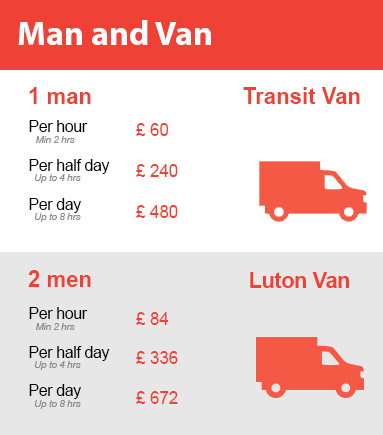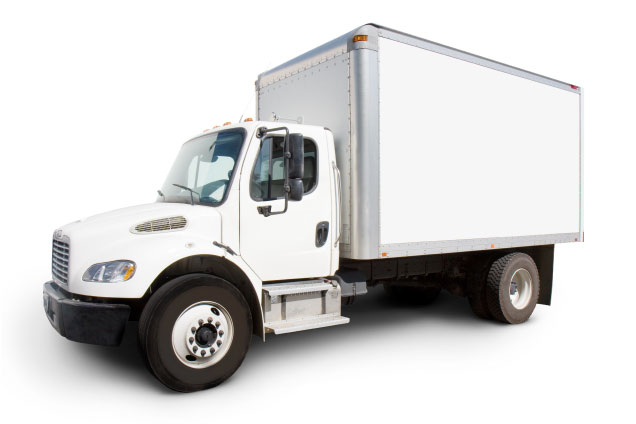Ultimate Guide to Bed and Mattress Moving
Posted on 13/06/2025
Ultimate Guide to Bed and Mattress Moving
Relocating, whether to a new home or simply within the same building, often means facing the daunting task of moving your bed and mattress. These essential items are not only sizable and bulky, but they are also investments in your comfort and well-being. This comprehensive guide to moving beds and mattresses will help you navigate the process smoothly, prevent damage, and ensure a restful sleep in your new space from night one.

Why Bed and Mattress Moving Requires Special Attention
A bed and mattress are foundational to your sleep health. Improper handling during a move can lead to:
- Physical Damage: Bends, tears, stains, or scratches.
- Hygiene Concerns: Exposure to dirt, moisture, or pests.
- Functional Issues: Warped frames or compromised mattress support, impacting comfort and longevity.
Moving beds and mattresses efficiently preserves their structure, hygiene, and lifespan, saving you money and discomfort in the long run.
Preparation: Planning Your Bed and Mattress Move
1. Measure, Assess & Plan
- Measure the mattress: Determine the size (Twin, Queen, King, etc.), thickness, and note any specialty features such as memory foam, adjustable bases, or pillow tops.
- Evaluate your bed frame: Consider material (wood, metal, upholstered), weight, and whether it can be easily disassembled.
- Plot your route: Measure doorways, stairwells, and hallways both in your current and new location to ensure the bed and mattress will fit through.
Tip: Create a checklist and timeline leading up to moving day.
2. Gather the Right Tools and Supplies
- Mattress moving bags or covers (protects against dirt, moisture, and tears)
- Straps and ropes (to secure items during lifting and transit)
- Moving blankets or furniture pads (prevent scratches and dings)
- Basic tools (screwdriver, Allen wrench, pliers for disassembly)
- Plastic bags and labels (to store and track small hardware)
- Dolly or hand truck (for heavy, difficult moves)
- Gloves (protect hands and enhance grip)
- Stretch wrap or packing tape
Having the appropriate gear makes the entire process of bed and mattress moving safer and more efficient.
Mattress Moving: Step-by-Step Instructions
1. Clean and Prepare Your Mattress
- Vacuum the surface to remove dust and debris.
- If possible, deodorize or spot clean stubborn stains. Allow the mattress to dry completely before packing.
2. Use a Mattress Bag or Cover
- Encasing your mattress in a mattress bag protects it from dirt, moisture, pests, and abrasions during the move. Seal the bag with packing tape for added security.
Tip: Handles or straps on mattress bags make lifting far easier.
3. Safe Lifting Techniques
- Never bend or fold a mattress unless it's specifically designed (such as bed-in-a-box memory foam).
- Enlist at least one helper. Mattresses are unwieldy, especially larger sizes.
- Lift with your legs, not your back, using a team to distribute weight evenly.
- Use straps or a dolly for stairs, narrow halls, or long distances.
4. Transporting the Mattress
- Always keep the mattress flat during transit. Standing it on its side can damage internal springs or foam layers.
- Use moving blankets for extra padding inside the truck or van.
- Secure with straps to prevent shifting. Avoid crushing under heavier items.
5. Unloading and Setup
- Carefully maneuver the mattress into its new location, again keeping it flat whenever possible.
- Remove the protective cover only once the mattress is in the final room to minimize exposure to dirt.
- Allow the mattress to air out before making the bed, especially if stored for an extended period.
Bed Frame and Headboard Moving Guide
1. Disassembly Steps
- Take photos before disassembling, especially of complex beds or adjustable bases.
- Remove bedding and mattress first.
- If applicable, unscrew slats or support rails and set aside.
- Disassemble the main frame with appropriate tools. Keep all screws and small parts in labeled plastic bags.
- If you're dealing with a platform, canopy, or storage bed, consider each component's weight and fragility.
- Wrap delicate parts, headboards, or footboards with moving blankets or bubble wrap for protection.
2. Moving Large or Heavy Components
- Upholstered headboards or intricate wooden parts may require multiple movers to avoid drops or scratches.
- Use a dolly for any oversized or especially heavy sections.
- Stack pieces neatly and label each item to simplify reassembly.
3. Transport and Reassembly
- Lay the heaviest frame components on the bottom of the moving vehicle, using padded blankets to prevent shifting.
- Upon arrival, assemble the bed structure first, ensuring all brackets and screws are securely attached.
- Place the mattress on top and allow it to settle before use.
Special Bed and Mattress Moving Considerations
Moving Memory Foam or Latex Mattresses
- These mattresses are heavier and more flexible. Avoid bending or folding.
- They're vulnerable to tears--double-bagging may be necessary.
- If transporting a bed-in-a-box, use the original packaging if possible.
Adjustable Beds and Motorized Bases
- Disconnect electric components and wrap remotes, cables, and hardware separately.
- Secure moving parts to prevent damage during transit.
- Consult the manufacturer's manual for specific moving instructions.
Moving Beds Up or Down Stairs
- Consider professional movers for tight stairwells or cramped apartments.
- Use extra caution with slippery or curved stairs - take your time.
Transporting Beds and Mattresses in Bad Weather
- Mover's plastic wrap and thick mattress covers are essential for rainy or snowy moves.
- Keep the items in the vehicle as short a time as possible to avoid dampness.
Professional Bed and Mattress Moving Services vs. DIY
Should you move your bed and mattress yourself, or hire professionals?
DIY Mattress and Bed Moving: Pros & Cons
- Pros: Saves money; gives full control over the process.
- Cons: Risk of injury, damage, or lost parts; requires significant physical effort and planning.
Hiring Professional Movers: Pros & Cons
- Pros: Expertise in heavy lifting and maneuvering; insured against accidental damage; saves you time and effort.
- Cons: Higher cost; scheduling and coordination required; less personal control.
Tip: Professional movers often offer special mattress moving services, including packing and setup. Compare quotes and reviews before booking.
Mattress Storage and Long-Distance Transport
1. Storing Bed and Mattress Before or After a Move
- Store mattresses flat, not upright, to prevent warping.
- Use climate-controlled storage to avoid moisture and temperature damage.
- Never stack heavy objects on top of stored mattresses or upholstered headboards.
2. Shipping Mattresses
- Some companies specialize in mattress shipping services, using professional-grade packaging and flat transport methods.
- For long distances, crate or box the mattress for added protection.
After the Move: Caring for Your Bed and Mattress
- Inspect for Damage: Check for tears, sagging, or stains after unpacking.
- Allow Airing: Let your mattress breathe for a few hours before covering with bedding.
- Clean Thoroughly: Vacuum the mattress and wipe bed frame parts as needed.
- Check Hardware: Ensure all screws/bolts are tightened securely for frame stability.
- Test for Squeaks/Instability: Address any issues immediately to avoid accidents.
Common Bed and Mattress Moving Mistakes to Avoid
- Rushing the process: Take time to properly cover, disassemble, and transport each component.
- Lifting solo: Mattresses and headboards are awkward and heavy, risking injury.
- Skipping protection: Always wrap or bag each piece to avoid dirt and damage.
- Losing hardware: Bag and label screws, bolts, and brackets immediately.
- Improper stacking in vehicle: Don't load heavy boxes atop mattresses or fragile bed parts.

FAQs About Moving Beds and Mattresses
Can you fold a mattress for moving?
Only fold a mattress if the manufacturer specifically allows it (such as some memory foam beds designed for compression). Traditional innerspring or hybrid mattresses should never be bent, as this may damage their internal structure.
How many people are needed to move a King-size mattress?
At least two strong adults are required; for tight spaces or stairs, three is safer.
What's the best way to clean a mattress after moving?
Vacuum both sides, spot clean stains, and allow the mattress to air out in a well-ventilated room before use.
Should I replace my mattress instead of moving it?
If your mattress is over eight years old, sagging, or uncomfortable, moving is a great time to upgrade. Otherwise, follow the steps above to transport and preserve your current mattress safely.
Conclusion: Stress-Free Bed and Mattress Moving
Successfully moving your bed and mattress depends on careful preparation, the right tools, and proper handling. By investing in protective materials, following correct lifting techniques, and planning your transport route, you can safeguard your comfort and preserve your investment in sleep. Whether you tackle bed and mattress moving solo or partner with professionals, use this ultimate guide to enjoy a smooth, safe transition to your new home or space. *Happy moving and restful nights ahead!*





